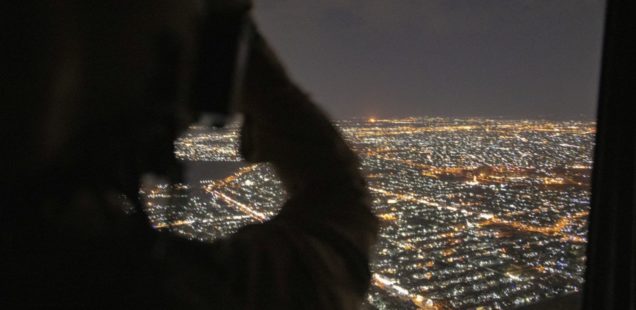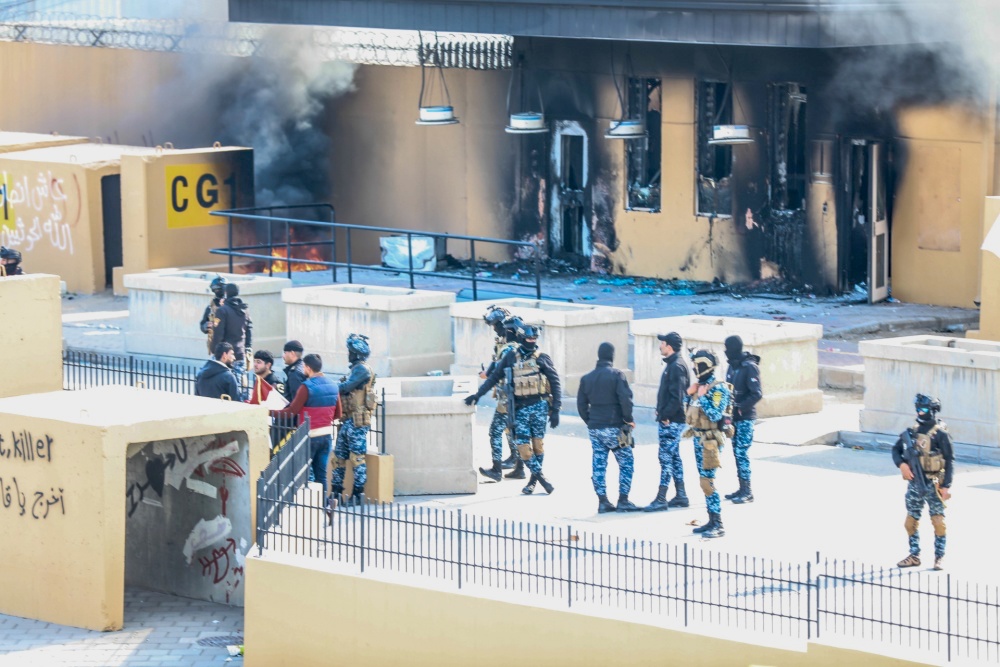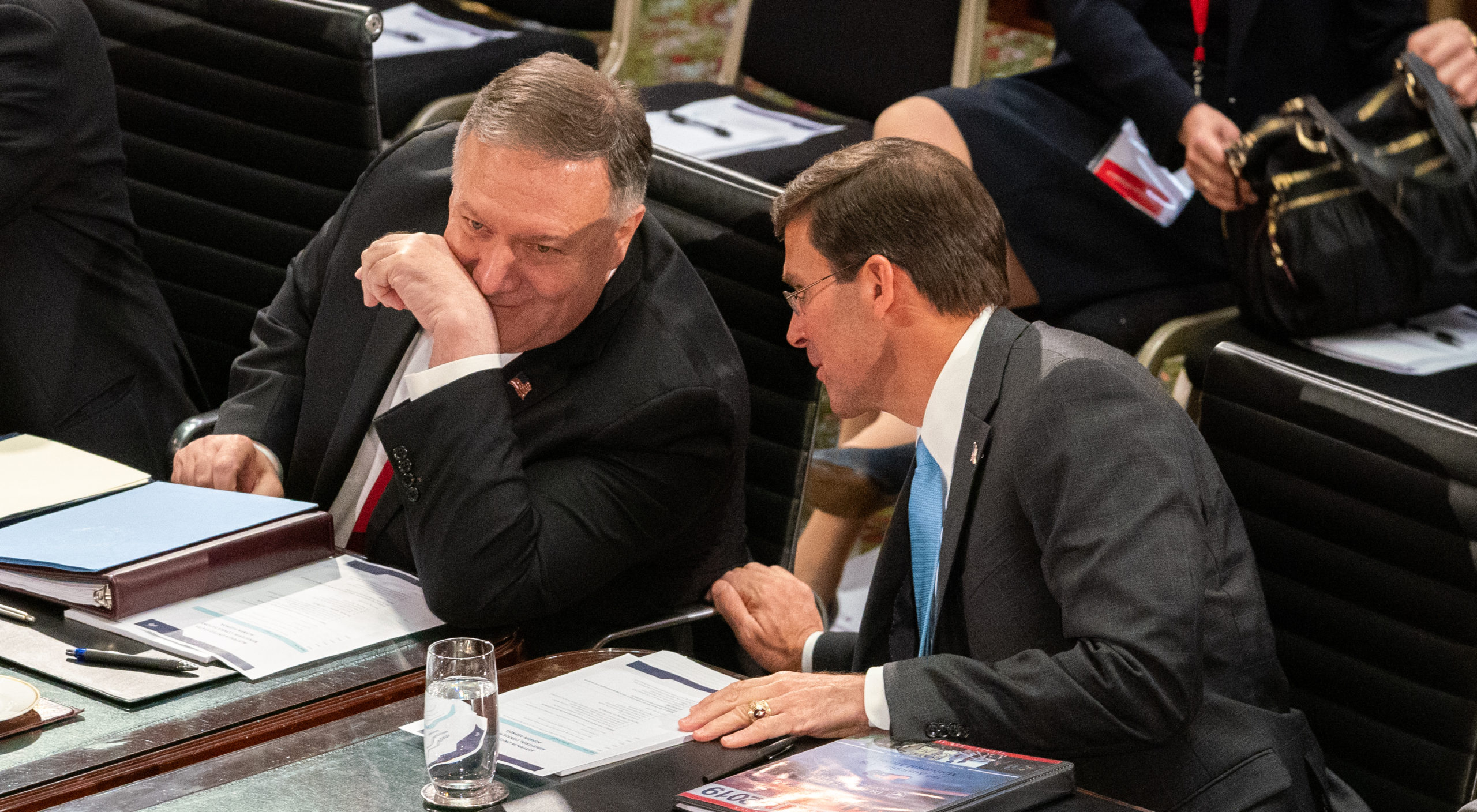
PATRICK LAWRENCE: The Iranian General’s Intent
Given the gravity of last week’s drone assassination, the State and Defense Departments must prove their claims against Qassem Soleimani.
AFAQ–TV, a satellite station broadcasting from Baghdad, ran a brief video clip last May of Ali Khamenei speaking to a small gathering. It is not clear who Iran’s supreme leader was addressing, but Qassem Soleimani appears to have been in the audience. The segment is 35 seconds long, just enough to capture Khamenei as he observes sardonically, “Praise be to God, who made our enemies fools.”
The drone assassination of the 62–year–old Soleimani at Baghdad International Airport last Friday is without question a strike very near the heart of Tehran’s leadership structure. But it will give Khamenei no cause to alter his thinking as to the foolishness of Iran’s adversaries.
Soleimani was a senior commander of Iran’s Revolutionary Guards Corps, leader of the Quds Force, a special ops unit within the corps, and the top defense and intelligence strategist behind Iran’s regional security policies. His murder has to be counted the most directly provocative action the U.S. has taken against Iran since relations broke off after the 1979 revolution. But if the Islamic Republic has suffered a critical blow, the U.S., as is its wont, has just sustained far more injury by its own hand.
Among the many questions surrounding this breathtakingly rash move, this one looms very large: Who ordered the murder of a sovereign nation’s leading military figure — and by some accounts a potential candidate for the presidency? Was it President Donald Trump, as we are incessantly urged to think? Or did paranoid hyper- hawks in the administration, chief among them Secretary of State Mike Pompeo and Defense Secretary Mark Esper, once again usurp the president’s power in a clear breach of the constitution?
Persuasive signs indicate the latter. The freakishly evangelical Pompeo appears to have worked with Esper to engineer this operation, with assists from various other senior officials. We have seen this before, notably during John Bolton’s tumultuous time as national security adviser. On numerous policy questions — North Korea, Venezuela, Syria, the Persian Gulf — the Bolton–Pompeo axis subverted Trump’s initiatives, leaving the president to indulge in Twitter storms to obscure what amounted to a humiliating loss of authority.

‘We Caught Him in the Act’
The immediate justification for Soleimani’s murder, as numerous Washington officials explained in precisely the same language last weekend, is that he was developing plans to attack American diplomats and service personnel in Iraq and elsewhere around the Middle East. These attacks, officials said in unison, were imminent. “We caught him in the act and we terminated him,” as Trump put it Friday in his first public remarks on the drone operation.
We saved the day: This is the official theme, emanating primarily from the Pentagon and State. Instantly we run into very significant difficulties — lacunae in the orthodox narrative that, after too many years of back-to-back lapses of this kind, must be vigorously questioned, even if a proper measure of skepticism is now considered unpatriotic in many quarters.
The first question to be raised concerns evidence, as it so often does in cases of aggressive American conduct. Where is the evidence of Soleimani’s plans? How do we know he was about to launch these “imminent and sinister attacks” — (Trump’s words again)? We have had nothing of substance from any official in Washington, only the implicit “Take our word for it” — this from people and government departments long since proven to be unworthy of public trust.
It was precisely the same in the case of the Russiagate allegations, for instance, and the gas attacks the U.S. repeatedly accused Damascus of perpetrating on Syrian citizens. The former now stands as a farrago of conjured rubbish, the latter an open-and-shut phony pretext to shell the Syrian capital.
Lessons Learned
Have we not learned our lesson by now? Anyone who understands the gravity of last week’s events must, as a matter of conscience, insist that State and Defense are obliged to present evidence to justify so grave a course as they have taken. It is to the credit of some Capitol Hill Democrats that they now question the official line, even if they do so primarily for political advantage.
If we consider the events leading up to Soleimani’s murder, what the press shamelessly shapes as defensive retaliation against Iranian aggression collapses into another con job intended to enlist the passive support of quiescent Americans. The Soleimani assassination was neither defensive nor retaliatory: It reflected the planning of the administration’s Iran hawks, who were merely awaiting the right occasion to take their next, most daring step toward dragging the U.S. into war with Iran.
Hyperbole, obfuscation, sins of omission, mis–and disinformation: The government-supervised New York Times and all other media that gutlessly follow its lead should be ashamed of themselves, notably for their horror-film characterizations of Soleimani as a ghoulish genius, the “mastermind” and “orchestrator” of all manner of terror, disorder, and violence that Iran, for reasons unexplained, prefers to cultivate along its borders and beyond. Such a person as our press portrays could not possibly walk the face of the earth. If the dangerous mess the U.S. has just made in the Middle East does morph into a war, the corporate press will bear a grave responsibility.
For the record, Adil Abdul–Mahdi said Sunday that he was scheduled to meet Soleimani on the day he was murdered. Topic: The Iraqi prime minister and the soldier the U.S. casts as a blood-soaked terrorist were acting as message-bearing go-betweens to advance the very tentative efforts of Iran and Saudi Arabia to reduce regional tensions and put the destructive Shi’a–Sunni rivalries of the past several years in the past. Doesn’t quite fit the American story, does it? Again, shame is our word.

U.S. Instigated Crisis
U.S. forces instigated this crisis 10 days ago, when they bombed five bases — three in Iraq, two across the border in Syria — used by Kataib Hezbollah, a paramilitary unit that has long served as a key force in the fight against the Islamic State. At least two dozen military personnel, including Iraqi regulars, were killed and many more wounded.
The Pentagon asserted that Kataib Hezbollah, a mostly Shi’a militia aligned with Shi’a Iran, was responsible for the earlier shelling of an Iraqi base near Kirkuk called K1 and used by U.S. and Iraqi forces. That rocket bombardment killed one American mercenary (“contractor” to those of delicate sensibilities) and wounded several U.S. and Iraqi personnel. This is the “defensive retaliation” story in sum.
From the very first, more problems with the U.S. version of events.
Once again, the U.S. has yet to present any evidence that Kataib Hezbollah was responsible for the shelling near Kirkuk. And details of the U.S. bombing strongly suggest it was a preplanned operation that took the Kirkuk shelling as a convenient pretext. To begin with, American F–15Es flew these five bombing operations within two days of the K1 attack — a highly unlikely timetable if they were truly reactive.
Equally, the bases the U.S. bombed were nowhere near Kirkuk: They were ranged along the Iraq–Syria border more than 300 miles from K1. Kataib Hezbollah has from the first denied it had any interest in sending rockets into an Iraqi base. There is also Kataib Hezbollah’s record as one of Iraq’s most effective forces fighting rump units of the Islamic State on either side of the Iraq–Syria border. Given the U.S. has covertly supported IS militias for years while purporting to hunt them down, the question raised is obvious.
Regarding Kataib Hezbollah
Let us consider two things you have not read in the corporate press. One, while Kataib Hezbollah is invariably described as “Iranian-backed,” it has been officially part of the Iraqi security forces since 2017. Had Kataib Hezbollah been responsible for the Kirkuk rocket attack, it would have been shelling its colleagues. Two, in its supposed retaliation, it should now be plain that the U.S. directly attacked the Iraqi military.
Actually, there is a third thing unmentioned in the U.S. press.
The day after the shelling of K1, Defense Secretary Esper telephoned Abdul–Mahdi to advise of the U.S. plan to bomb the five Kataib Hezbollah bases. When the Iraqi prime minister asked to discuss the decision, Esper refused. When Abdul–Mahdi then asked that the operation be canceled, Esper again refused him. When the prime minister asked Esper if there was evidence against Kataib Hezbollah, Esper declined to answer.
It is difficult to believe, but after the U.S. bombing it was Esper’s chief spokesman, Jonathan Hoffmann, who had the nerve to call on “Iran and their K.H. proxies” — that is, a unit of the Iraqi military — to “respect Iraq’s sovereignty.” Arrogance and ignorance: always a dreadful combination.
Large, sometimes violent protests in Baghdad’s Green Zone followed the U.S. bombing operations, trapping American diplomats and personnel in the U.S. embassy for nearly two days. Demonstrators relented only when Kataib Hezbollah officials, who led the protests, called them off. And Kataib Hezbollah called them off only after Abdel–Madhi committed to introducing parliamentary legislation requiring the U.S. to withdraw all forces — they now number about 5,000 — from Iraqi soil.

It was at this time the American officials raised the volume on assertions that Iran directed the shelling of the Kirkuk base and the demonstrations at the Baghdad embassy that followed the U.S. bombing runs. These claims were the essential preface to the Soleimani assassination several days after the Green Zone protests. Is it necessary at this point to report that no Washington official has presented any evidence in support of the accusations leveled at Iran?
It is not yet clear how Iran will respond to Washington’s irresponsible provocations. The senior leadership vows “severe revenge.” Cybertattacks or assassinations of U.S. military figures of a rank equivalent to Soleimani’s cannot be ruled out. But it is difficult to imagine the Iranians will miscalculate at so fraught a moment. It is very likely Tehran will refrain from any action the U.S. could use to escalate its aggression further.
Mohammad Javad Zarif, one of the first top-ranked Iranian officials to speak publicly after Soleimani’s murder, described the drone strike Friday as “extremely dangerous and a foolish escalation.” Given the Iranian foreign minister is an influential voice for moderation in Tehran, his remarks suggest Iran will now wage a vigorous war of words while seeking maximum support among international allies. The absence of a retaliatory move thus far reinforces this expectation.
There is another reason to assume the Iranians will prove the adults in the room. Soleimani’s death is a severe loss, certainly, but Tehran comes out of this crisis unmistakably the winner. The bedrock of its foreign policy has long been to counter Washington’s neo-imperialist meddling in Iraq and elsewhere around the region: Middle Eastern solutions to Middle Eastern problems is the principle. Here is Zarif on Saturday, again on Twitter: “End of U.S. malign presence in West Asia has begun.” This is precisely what Khamenei meant in his mention of foolhardy enemies last spring.
This end may now come first in Iraq. Abdul–Mahdi has been incensed with Washington’s cavalier indifference to Iraqi sovereignty since the current crisis began the weekend before last. And he appears to have wasted no time submitting to parliament the legislation he promised Kataib Hezbollah. On Sunday the legislature voted to expel all foreign troops and to file a formal complaint against the Soleimani assassination at the U.N. In addition to U.S. forces, various NATO members, including Turkey, also deploy troops on Iraqi soil; Iran does not.
It is not clear what the parliamentary vote in Baghdad and Abdul–Mahdi’s appeal to the U.N. will yield. Addressing the legislature prior to its deliberations Sunday, the prime minister urged lawmakers to “end the existence of [foreign] forces immediately and start immediate arrangements for this.” But there is principle and there is power; the U.S. has none of the former and too much of the latter.
At this early moment, it is difficult to imagine Washington obliging a weak, unstable client state when it orders American soldiers off its soil. Even if U.S. forces remain in defiance of Baghdad’s sovereign rights, however, they will operate in an environment of probably unprecedented official and public hostility.
Virtually all public statements explaining American actions and justifications since the Iraq–Iran crisis erupted late last month have come from either the Pentagon or State. The White House, with some exceptions, has been notably silent. This raises the key question noted earlier: Who in Washington is responsible for this foolishly precipitated mess?

We have no certainty on this point, and there may never be any. But the progress of events over the past 10 days strongly suggests Trump now has a Pompeo–Esper axis on his hands, these two assisted by Mark Milley, chairman of the joint chiefs of staff, who, until early last year, quashed a study of the Iraq war that reflected badly on how the Army conducted it.
Trump neither planned nor ordered the fateful bombing of the five Iraqi bases used by Kataib Hezbollah on Dec. 27. This is very clear. Pompeo and Esper flew to Mar–a–Lago the previous day to brief Trump on their plans, leaving the president merely to nod in the face of a fait accompli. He did so — late and with no apparent enthusiasm.
As to the Soleimani assassination, we have plentiful statements from officials at State and Defense, dutifully reproduced in the press, that Trump ordered it. But if we just witnessed what amounts to a palace coup led by these two departments, of what worth are these accounts? In chest-out fashion, Trump now claims to have authorized the operation. But these assertions look very like after-the-fact efforts to put the best face on a boldly unlawful challenge to his authority. Let us not forget that Trump has long favored negotiation with Tehran rather than conflict.
Here is Trump Friday morning: “We took action to stop a war. We did not take action to start a war.” Here he is that evening: “We do not seek a war, we do not seek nation-building, we do not seek regime change.” The president’s secretary of state, who thinks in biblical terms of an end-times war with evil, seeks all three of these things.
What does it mean when the president explains what is plainly an act of war by asserting that war is not his intention? The contradiction here is too obvious to ignore. It is difficult to avoid the conclusion that it lies between a president who prefers summitry and dealmaking and those around him who prefer wars — and who by now have a considerable record of subterfuge in the face of Trump’s policy initiatives.

